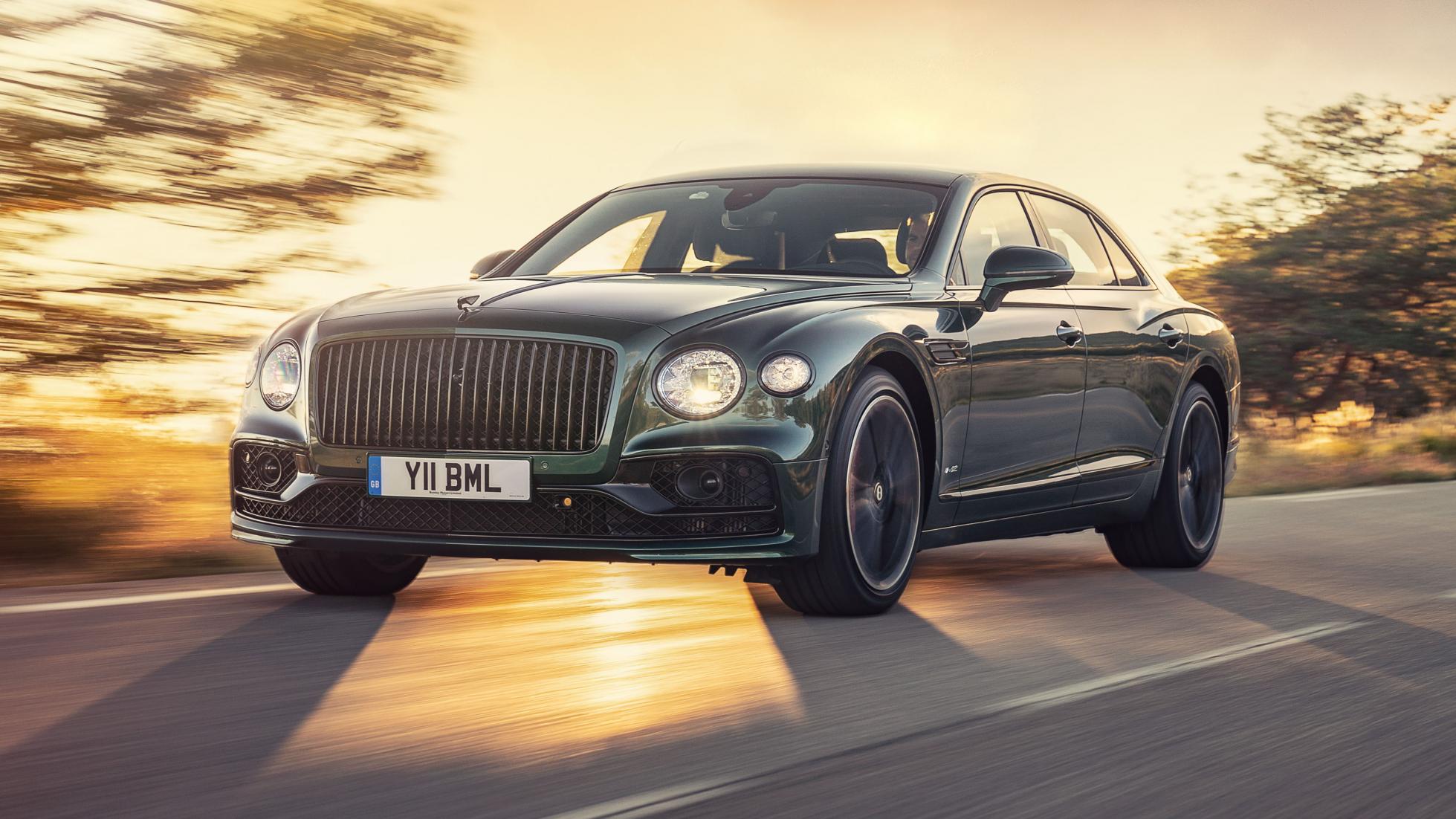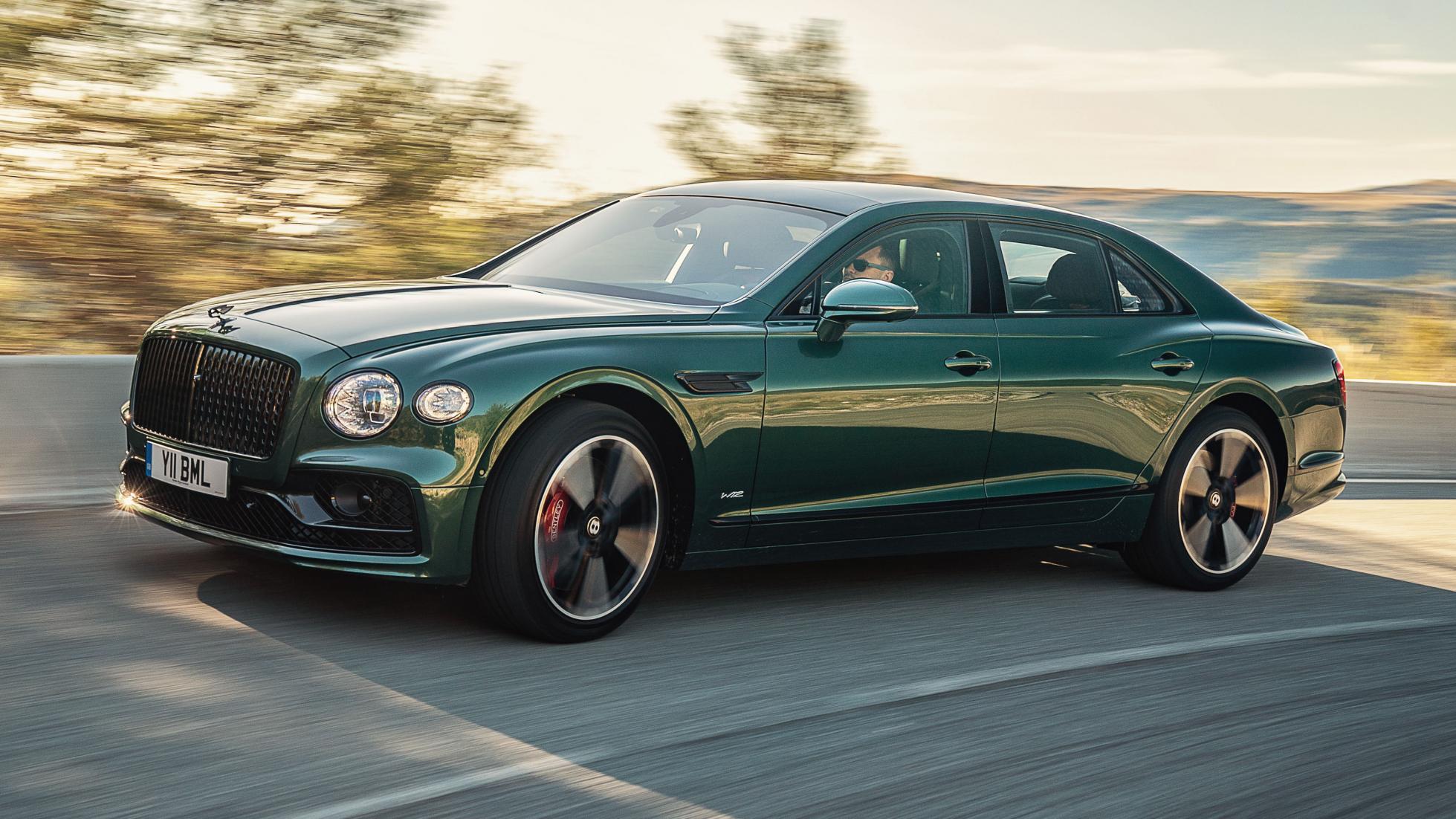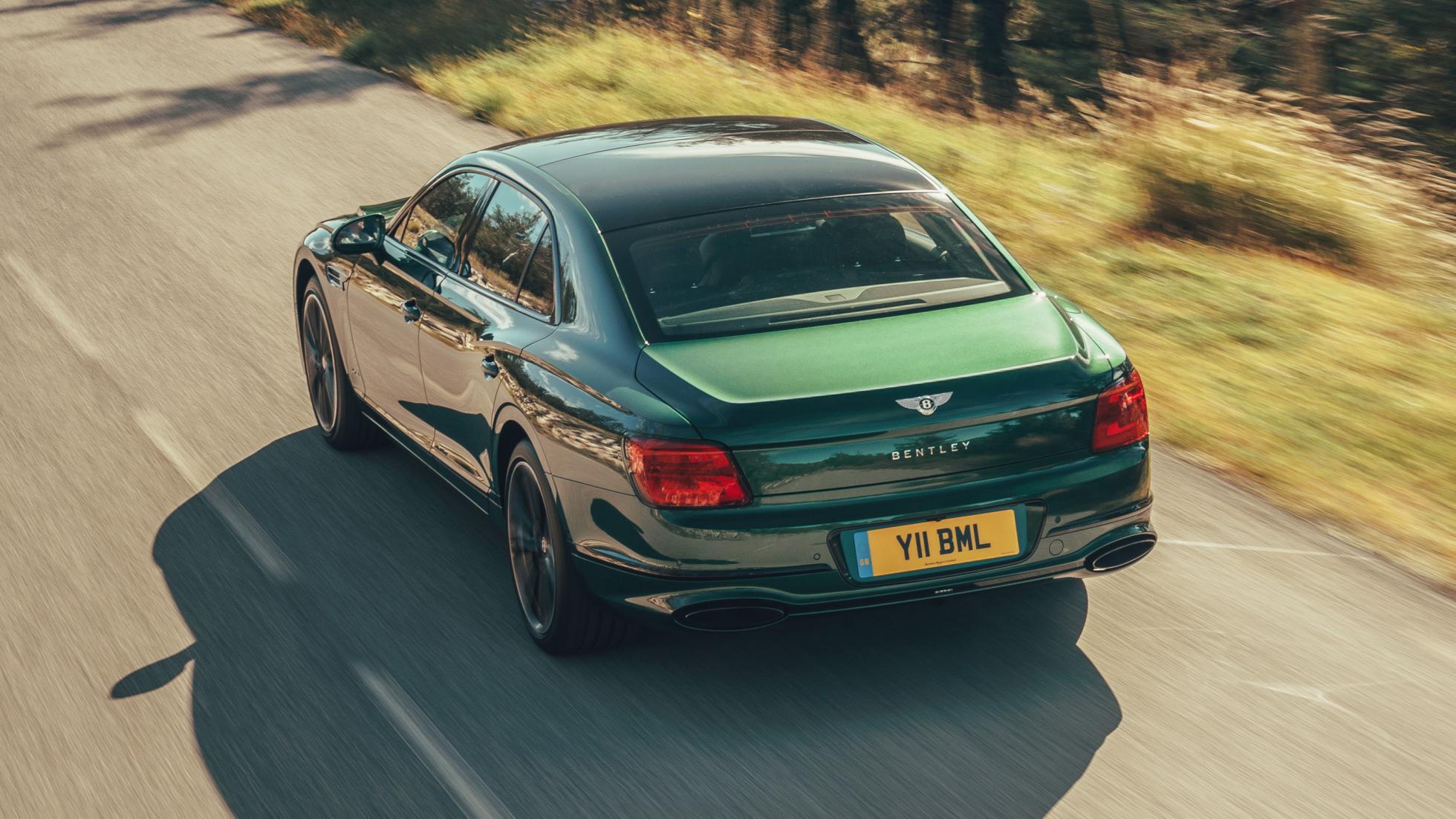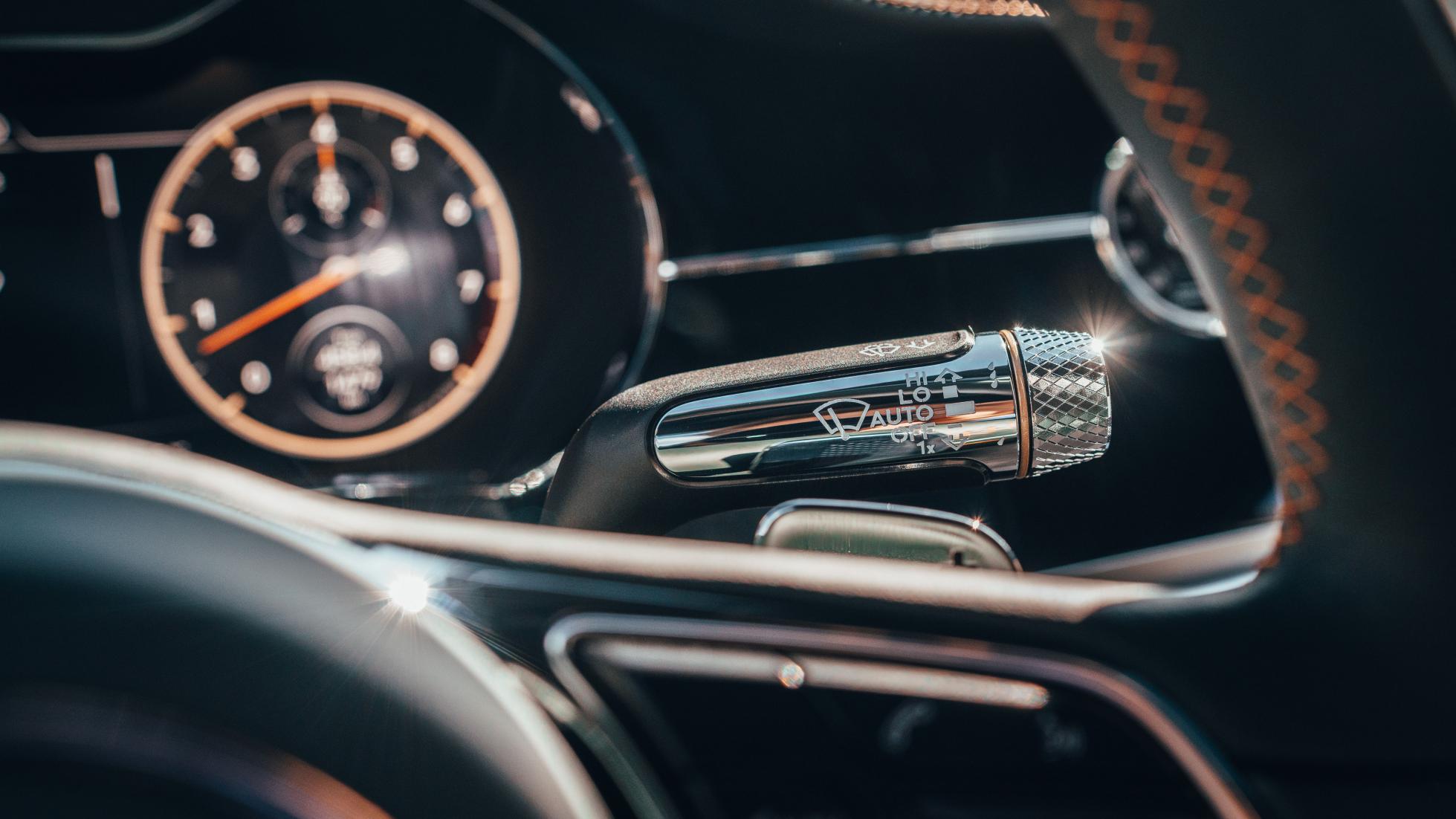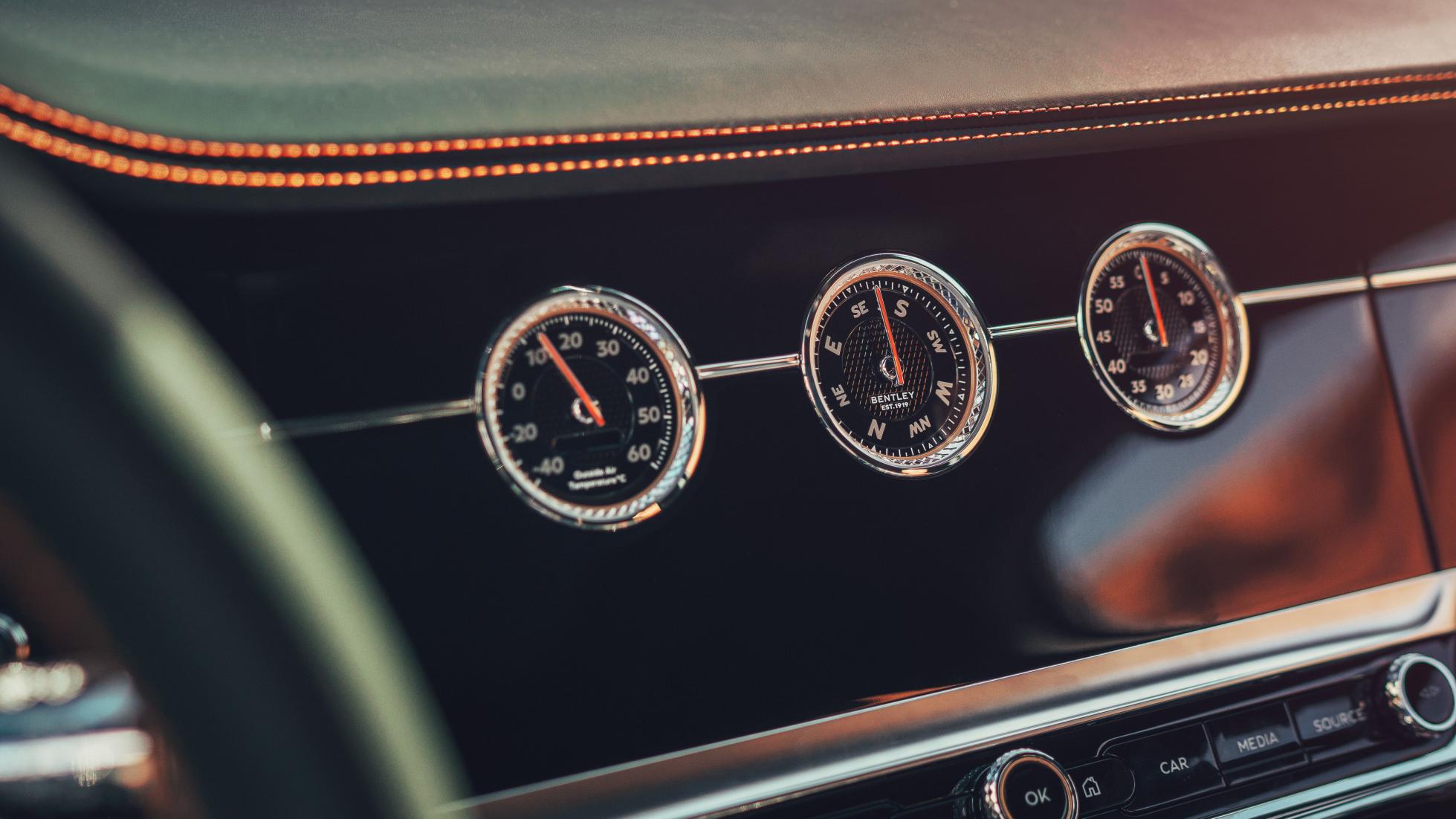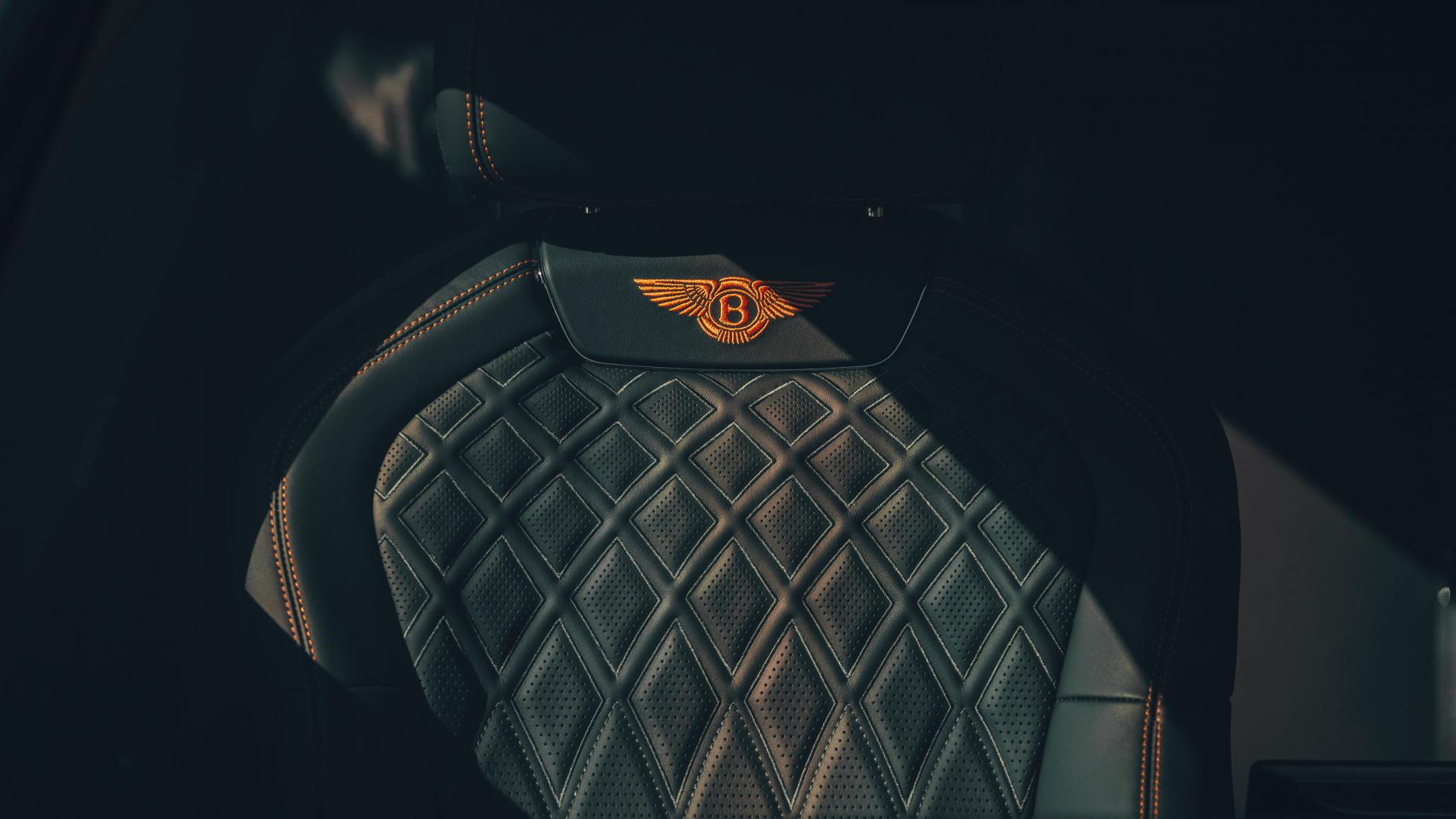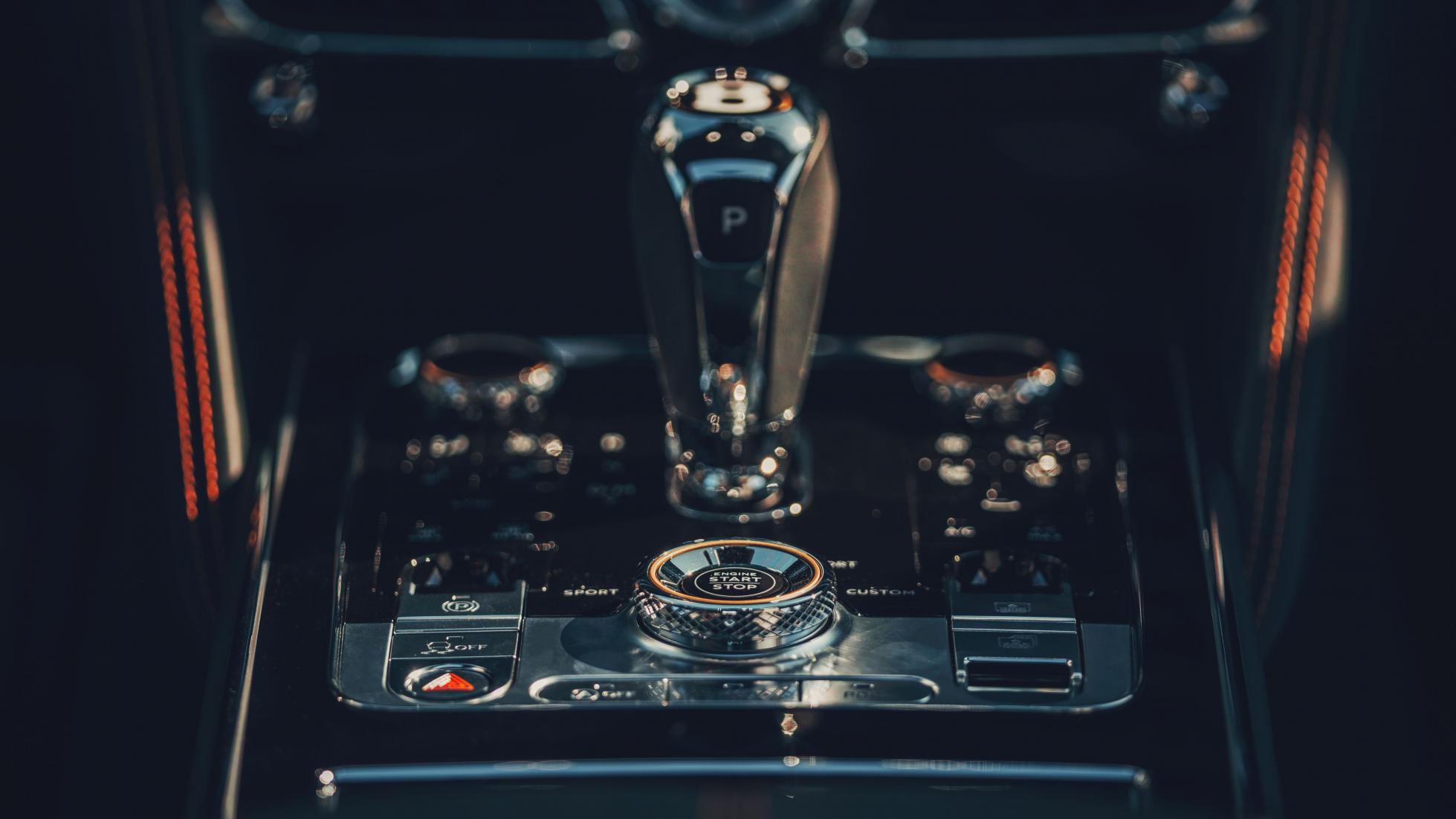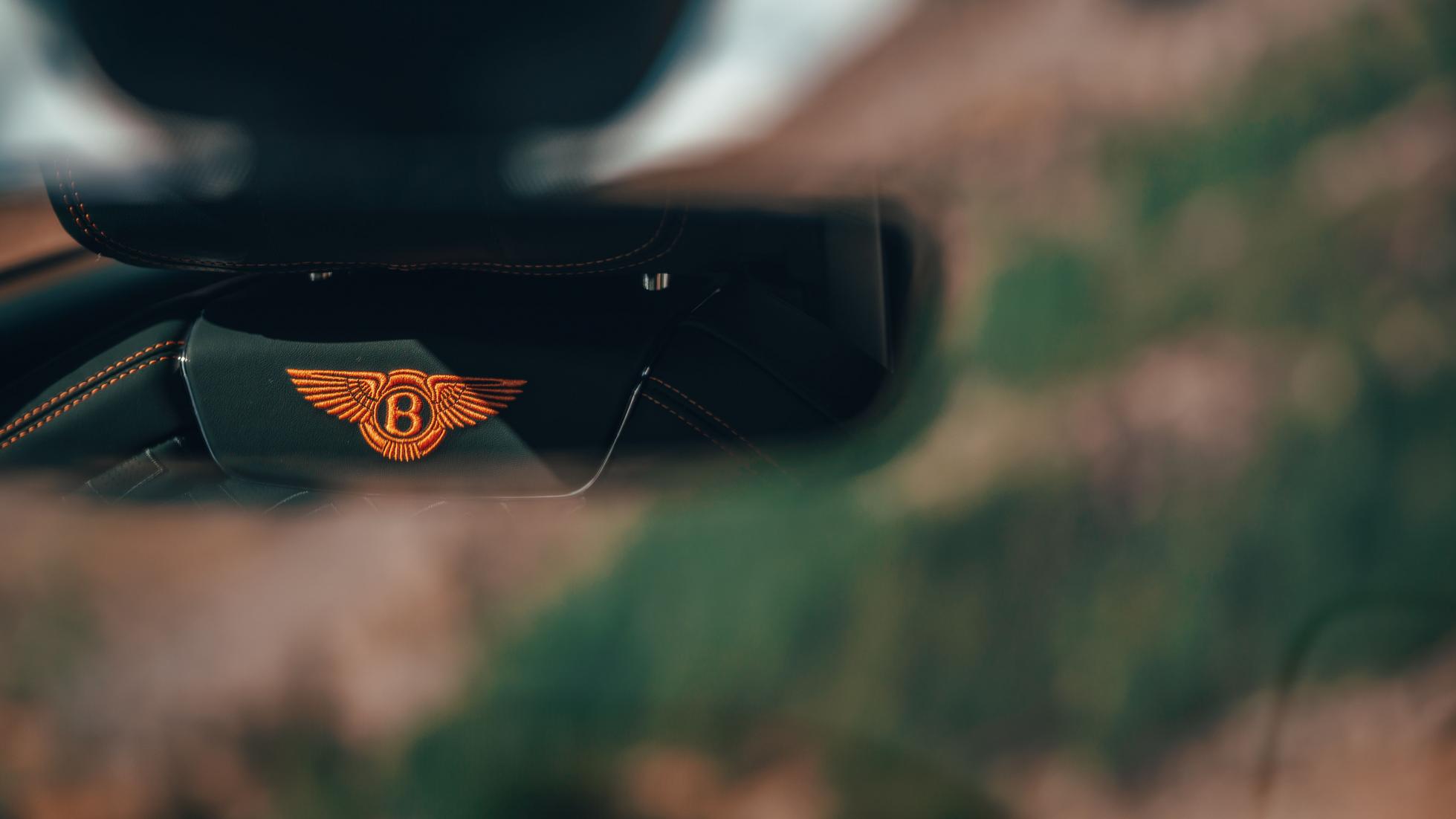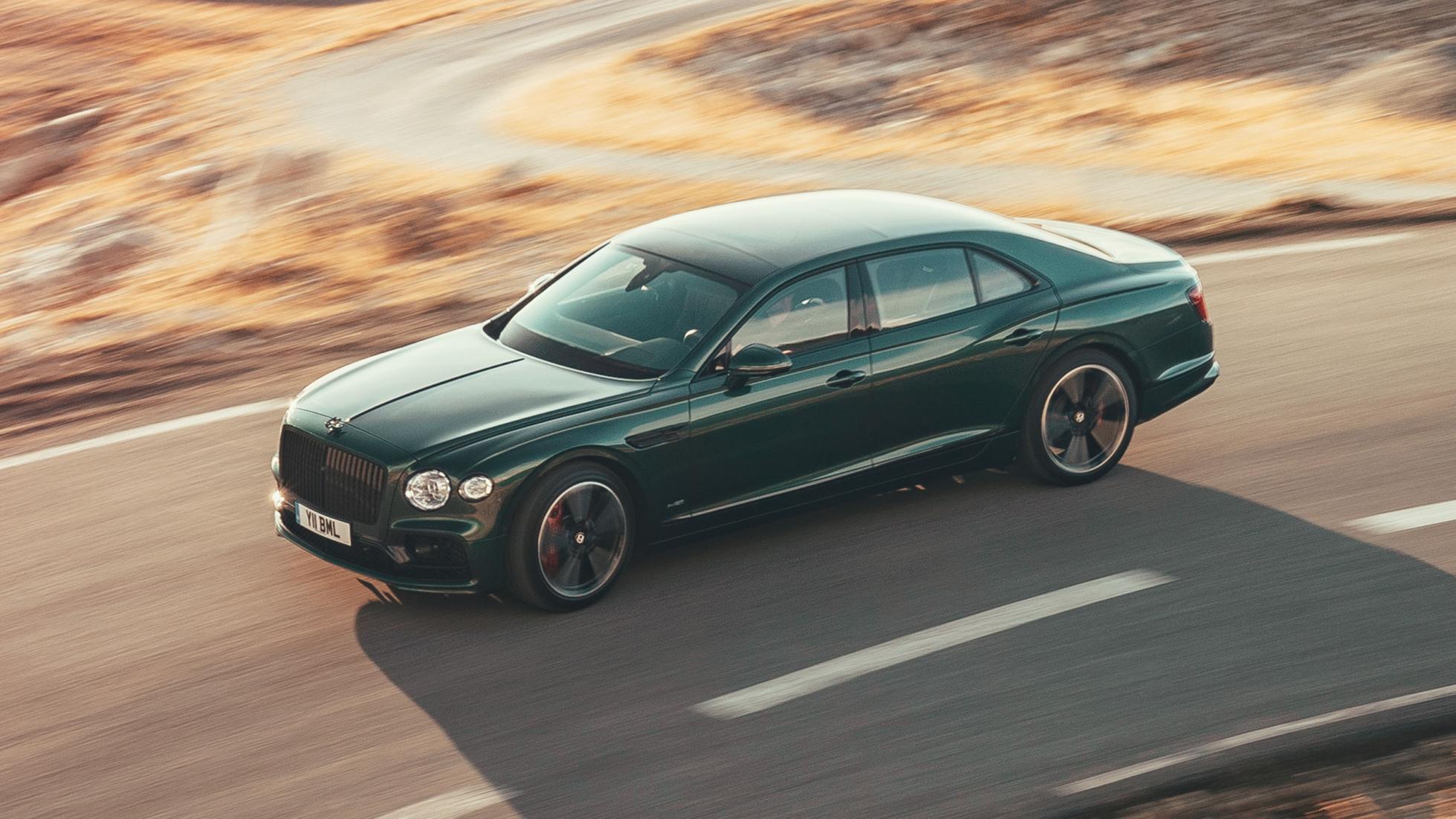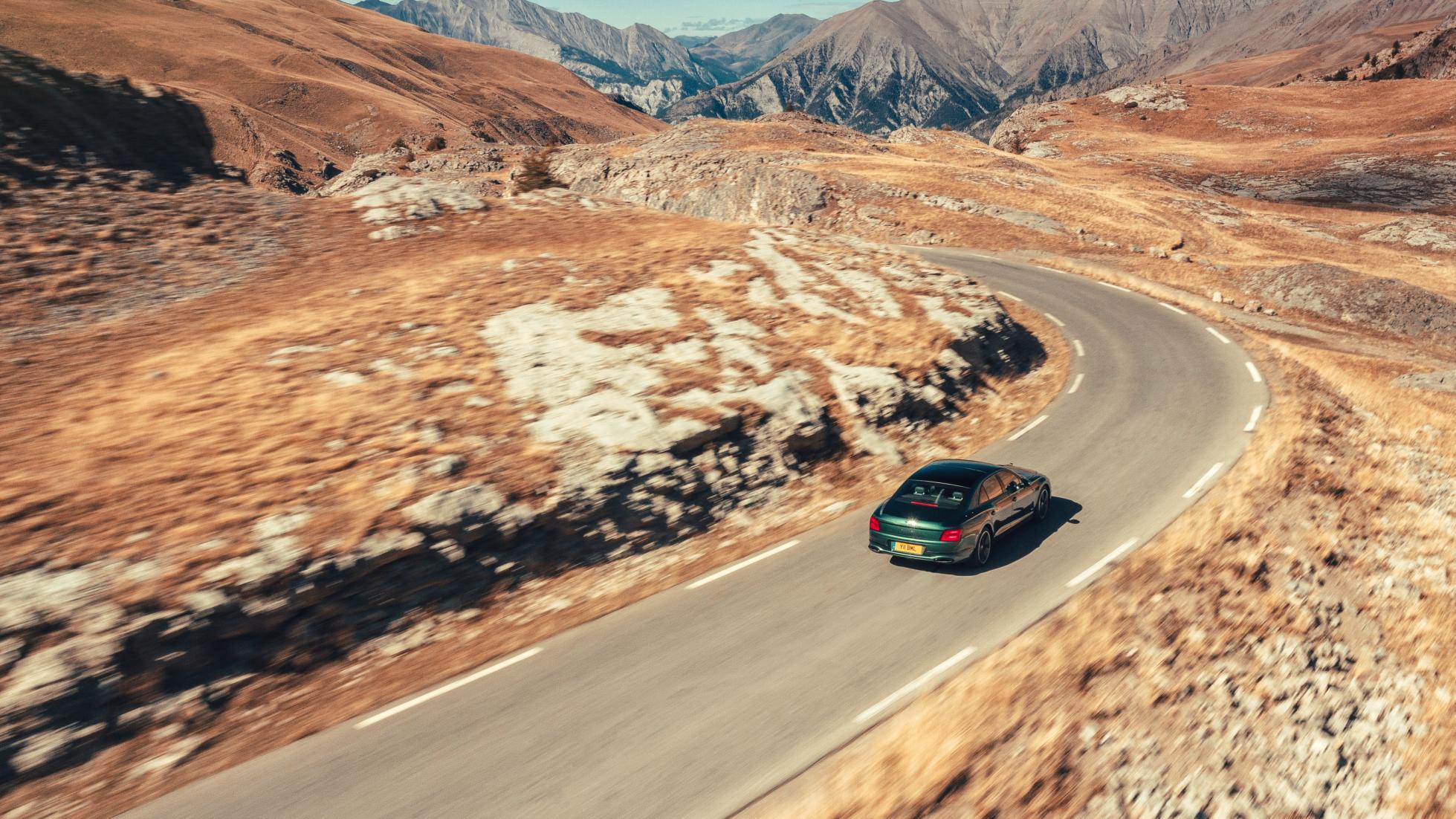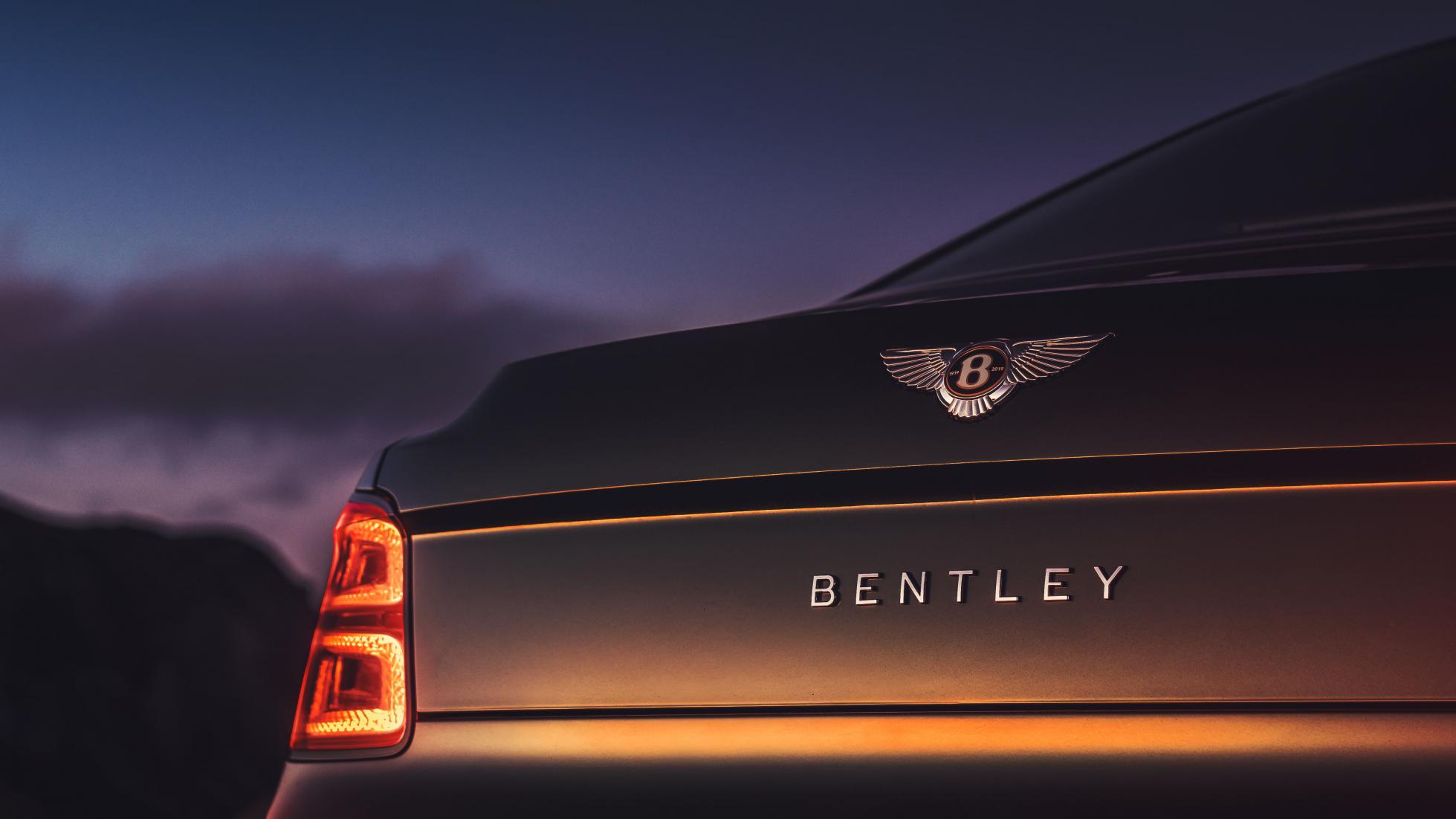Bentley Flying Spur Review: W12 super-saloon tested
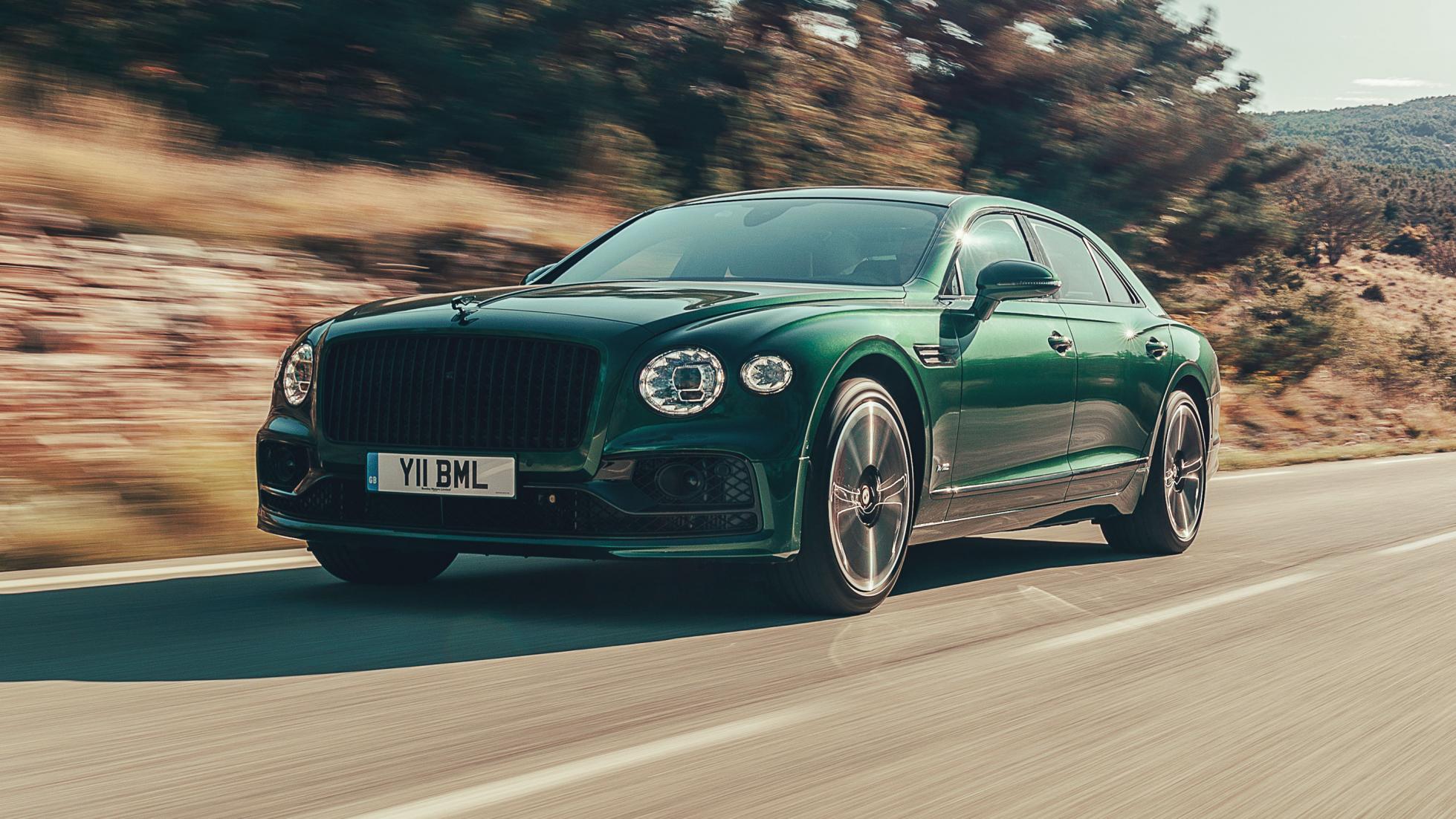
OVERVIEW - What is it?
Handsome, isn’t it? Well, once you get past the grille (Baleen whales spring to mind. Maybe it’s good at filtering krill). Check out the proportions though, the sense that the front wheels have been pulled forward, the windscreen sloping back in sympathy, the way it sits on its wheels. In profile it’s a bloody good bit of design. Never been able to say that about a Flying Spur before.
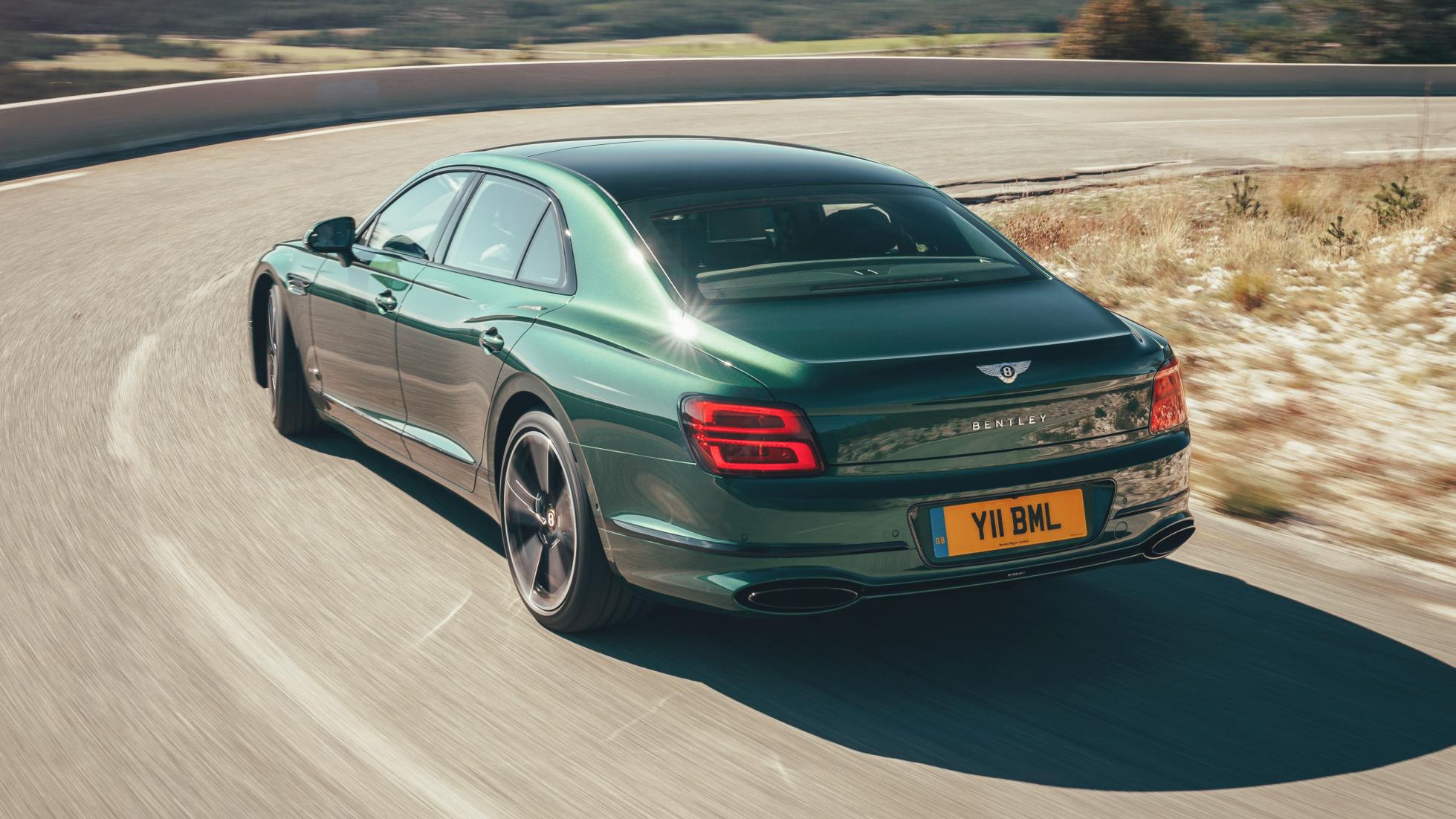
Well, not since the badge first appeared on a four door back in 1957. It was an element of Design Director Arthur Taylor Johnstone’s heraldic crest that gave the car its name. The plate came back in 2005, adorning a saloon version of the Continental GT. It wasn’t a looker, yet Bentley has sold 37,000 of them to date. The trouble was that the last gen Flying Spur, even after it was face-lifted in 2013, was a car for the driven, not the driver. It both looked and felt too nose heavy. Better to sit in the back.
On paper there are strong similarities between that and this, the all new Flying Spur. Both use the 6.0-litre twin-turbo W12, and power is only up 10bhp. Weight is only down 38kg, length and width have grown by a mere 21mm and 2mm respectively. The new one is 4mm lower, has a similarly commodious boot and back seat. But then the changes: within that almost identical length, the axles are now 130mm further apart, the chassis (all new and all aluminium, so too the bodywork) features a 48 volt electric system that manages an active anti-roll bar and four-wheel steering.
The 4WD system is more rear-biased, the gearbox is not a regular automatic but an eight-speeder with twin clutches. Torque has risen by 100Nm. Efficiency is up 15 per cent on the new WLTP cycle, even if figures of 14.8 litres/100km and 337g/km of CO2 are nothing to boast about.
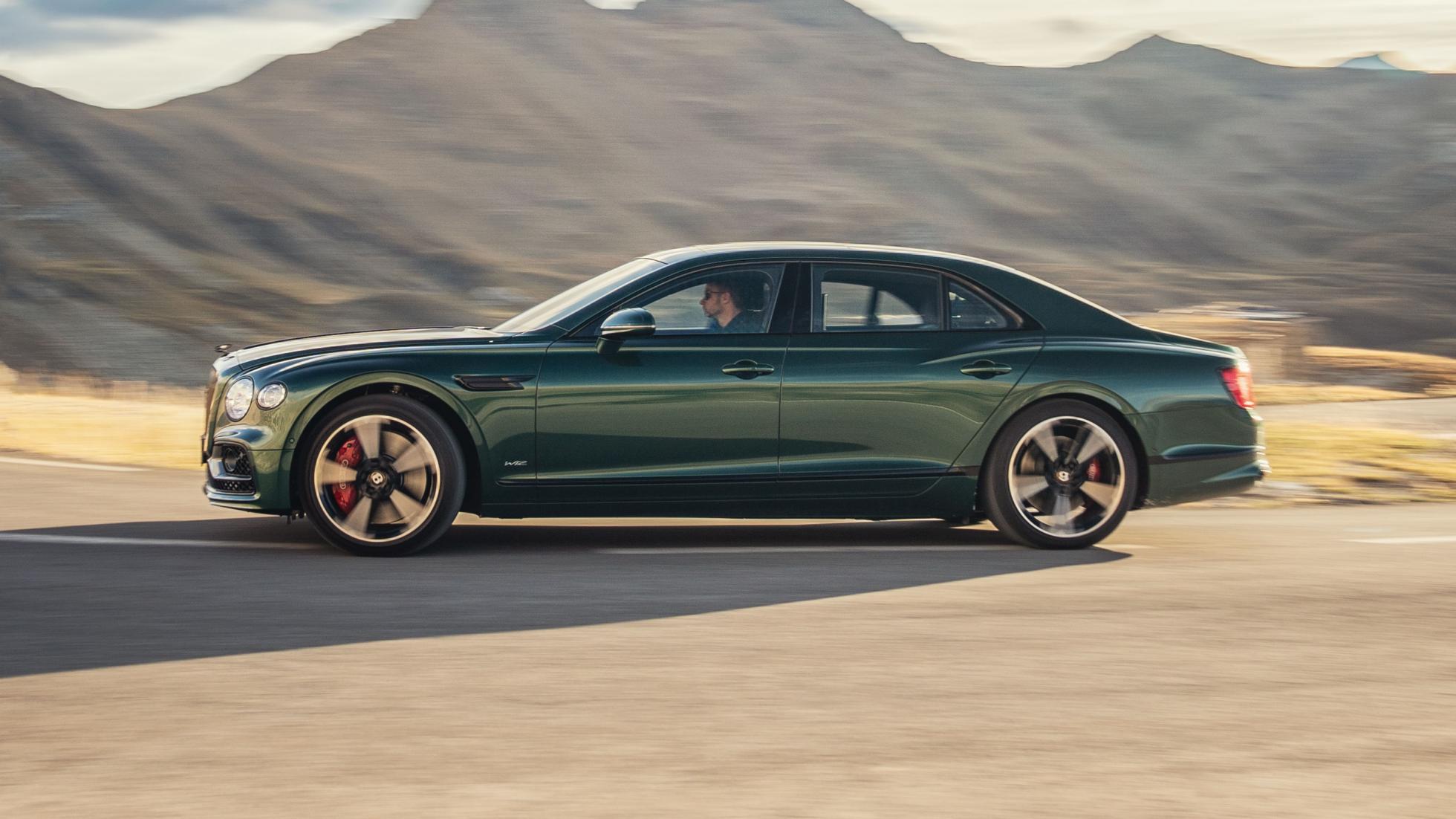
Leaving that aside, doesn’t this sound a much more dynamic car? Rear steer, more rear biased torque delivery, the driver sat further back in an elongated wheelbase, plus 626bhp for a 0-100kph time of 3.8secs – faster than any Merc S-Class, up to and including the S65. A top speed of 333kph. It even has launch control. Most of these features (bar the rear-steer) are lifted from the current Continental GT coupe, but beyond that you get the feeling Bentley has thought long and hard about how and where to position this car. To turn it into something owners will be as happy to be seen driving as being driven. That’s a clever strategy and should give it more far-reaching global appeal, but also set it aside from both the regular chauffeur driven stuff (who these days would buy an S-Class to drive themselves?).
It costs £168,300 – just under ten grand more than the Conti GT coupe, but substantially less than the £234,000 Bentley currently charges for its flagship saloon, the bigger, heavier and in no way dynamic Mulsanne.
You get the feeling that when the first Flying Spur was being developed over 15 years ago, VW kept a relatively tight rein on proceedings. Now Bentley has proved itself under the family umbrella it’s been allowed more control. The result looks impressive on paper, so how’s the reality?
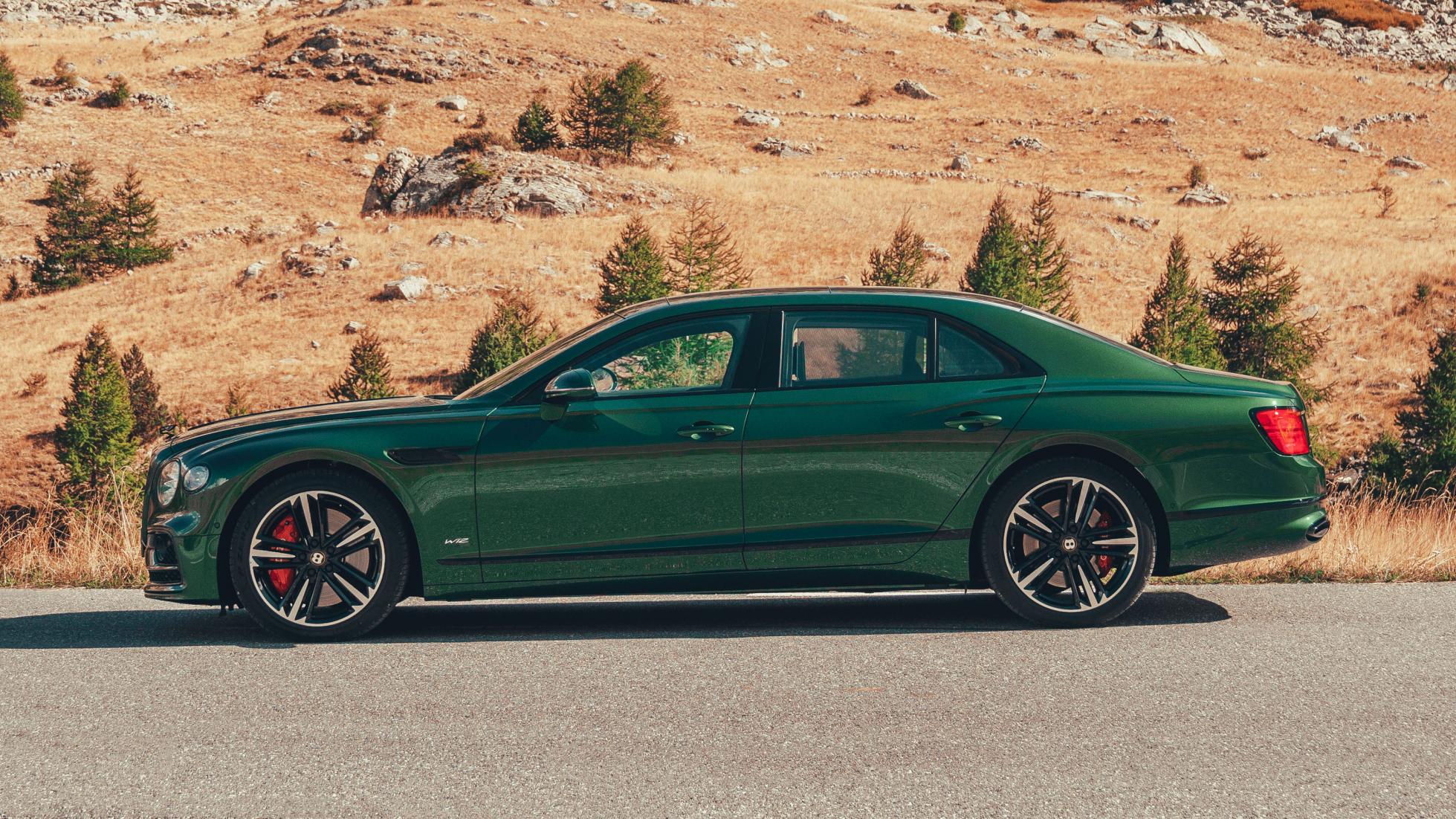
DRIVING - What is it like on the road?
Welcome to the driver’s seat. Very like the Conti GT in here, isn’t it? Good enveloping seats, commanding driving position, better forward visibility than you were anticipating, and little if any sense that there’s an enormous amount of car both in front and behind you. The nose drops away, making it tricky to tell if your Flying B is raised or lowered – a new feature. But hardly core to the driving experience.
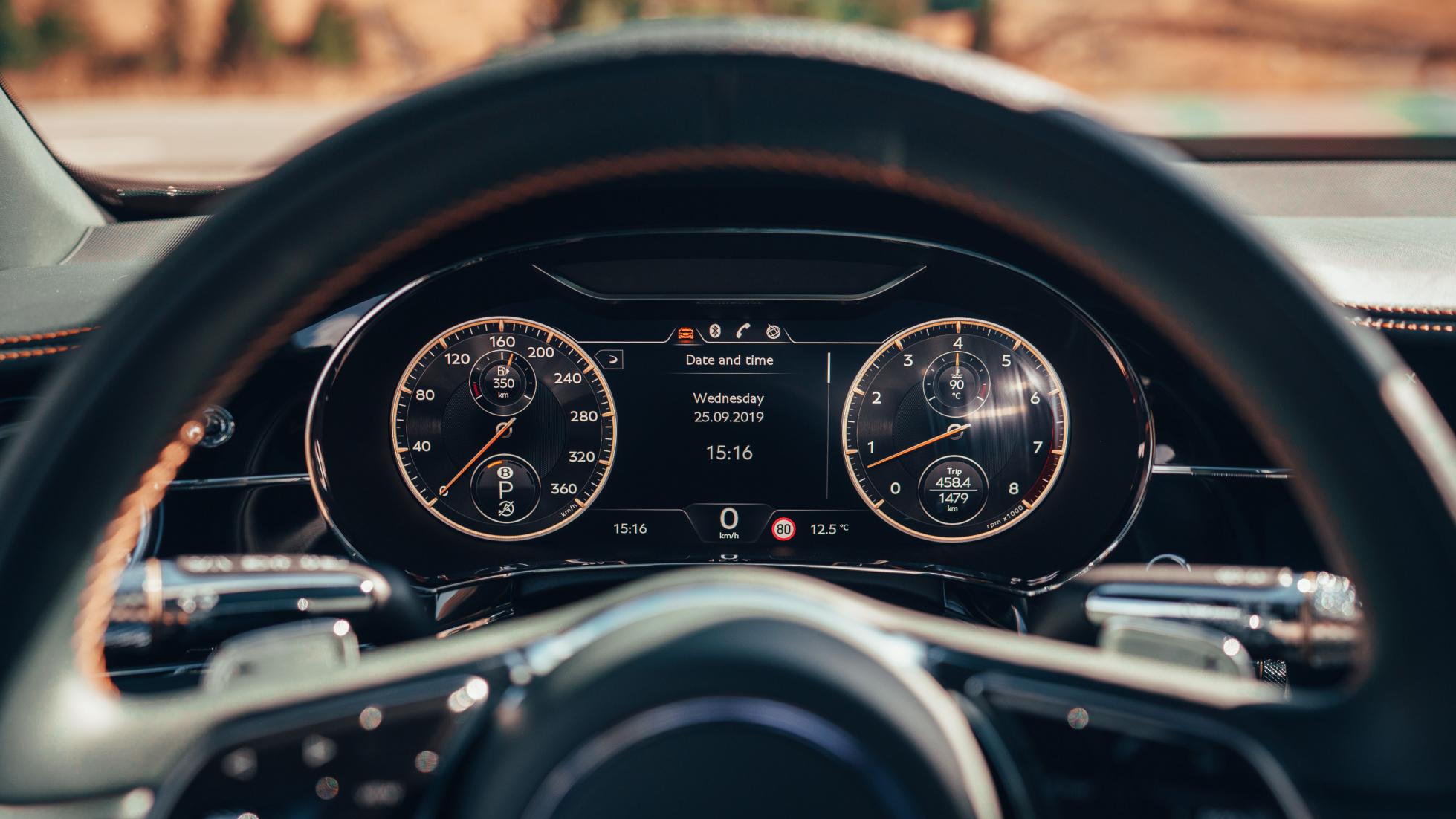
Engine first. We know this W12 well. It’s hand assembled in Crewe, a 5950cc fusion of two V6s on a common crank. Much development has occurred since VW first donated its VR6s to Bentley’s cause. It now features cylinder shut-off, the clutch detaches for coasting, it’s cleaner and more efficient than ever. Take it gently and it can be persuaded to achieve 11.3 litres/100km. In reality 18-20 is more likely. It’s hard to resist the surge of power – or more accurately, torque. This effortless drive from low revs defines the Bentley experience. Yes, the engine does slightly lose its composure if you hammer it past 6,000rpm. But you never will when you have 900Nm available from 1,350 to 4500rpm. Dignified pace delivered with whirring smoothness from a distant engine bay.On the whole the twin clutch gearbox does a good job of managing all this might. Around town it behaves just as you expect, each gear discreetly selected, the whole drivetrain easily managed with only the throttle pedal. If you choose to pick up the pace you’re better off investigating the paddles. Put it in Sport mode and the gearbox wants to use an unbecomingly low gear.
In Comfort or Bentley modes, it’s just a bit sleepy, often three gears too high coming into a corner. Better to tug the lever into manual mode and have a crack with the paddles yourself. Third or fourth are good for just about every corner. Now your issue is throttle response. You expect it to be lazy in Comfort mode, but even in Sport the pedal needs excessive pressing before you get the response you expect. You can drive round it – mostly – by learning there’s an inch of dead travel, but it would be nice if it was more alert.
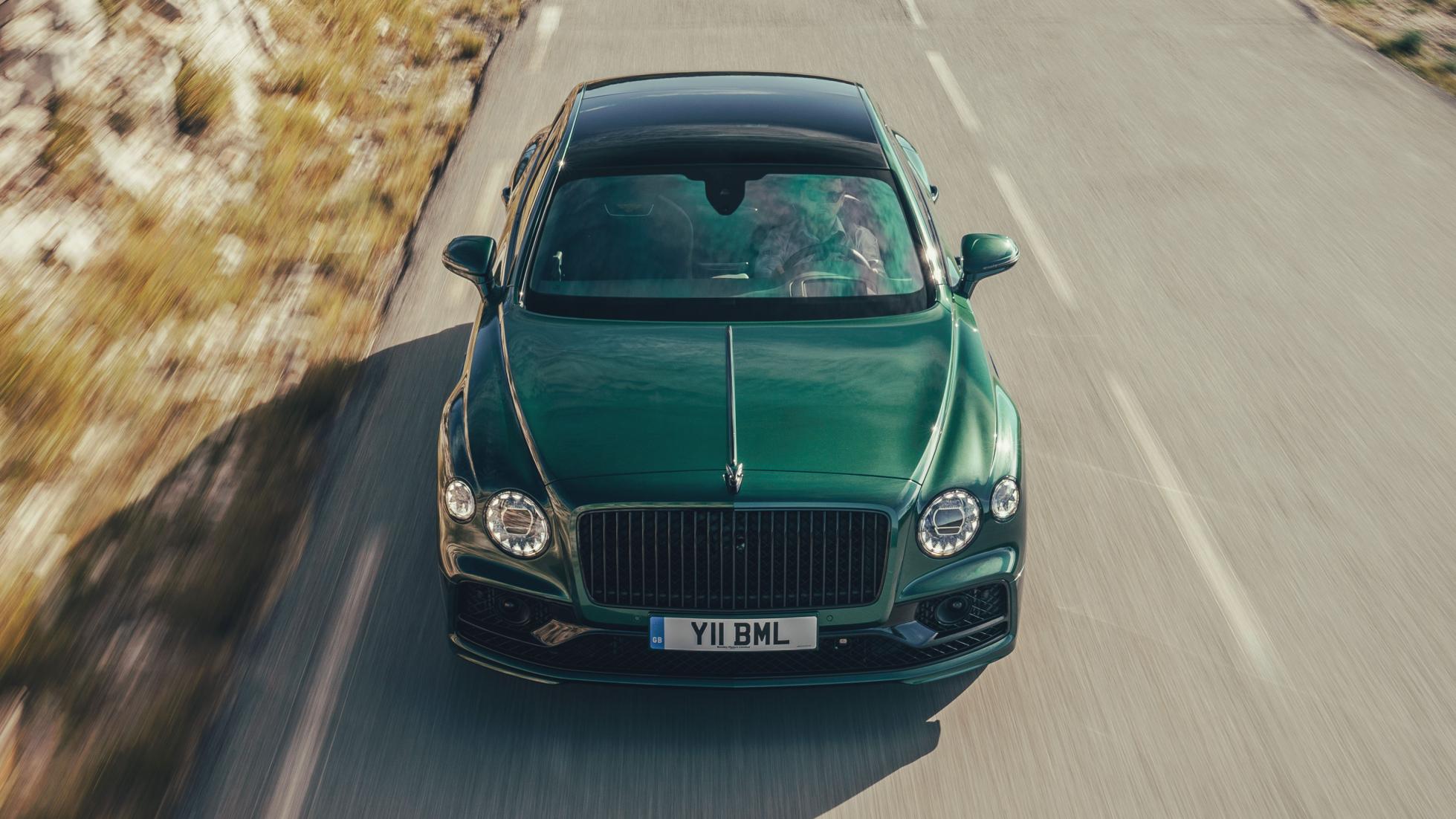
While we’re being negative… Approaching a speed bump? You might want to twist into Sport mode – in Comfort it’s so softly sprung you can scuff the nose.
But that’s it. That’s all the bad stuff out the way. The rest of the Flying Spur’s driving experience is downright impressive. The 48 volt electrics are the making of it. Not only does the active anti-roll work better and make more sense here than in any other car we’ve tried it in (permitting soft springs without the penalty of excessive body roll), but combined with four-wheel steering, helps the car feel lighter, more agile and more manageable than it has any right to be. You treat the Mulsanne like an SUV, you treat the Flying Spur like a sports car. It can be hustled.
Barrel too fast into a tight corner and physics takes control, but in every other circumstance you come away impressed. Accelerate through a corner and you don’t get terminal understeer, but instead all four wheels work hard. Sport mode is even more rear-biased, with the fronts only getting 31 per cent of available torque. And unless the system detects slip, it’s fully rear-drive.
Sport mode isn’t the one you’ll be in, though. Instead you’ll have left the central control knob in B-for-Bentley. Or possibly twisted round to Custom and altered the drivetrain, suspension and steering individually. In Sport the three chamber air springs reduce their volume, the result is a bit of road patter and jiggle on all but the smoothest surfaces.
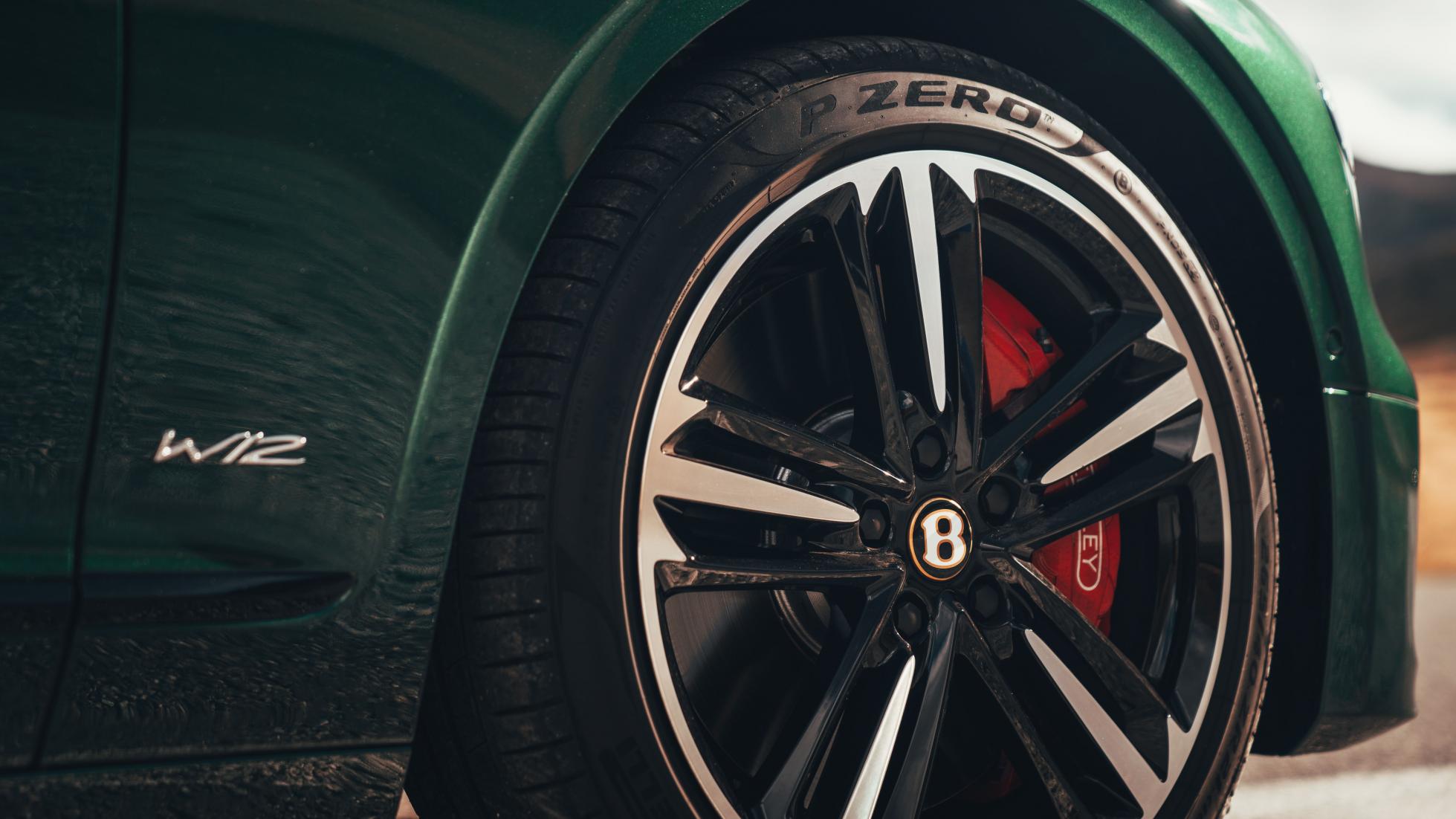
Bentley mode does it better, has the best blend of poise and control. But more than that is the sheer breadth of change between soft and hard modes. Often there seems little variation in ride firmness, but here the differences are marked, each giving the big saloon a very different driving character.
And the character you’ll want most of the time is probably Comfort. Effortless waft. Wheel control can be an issue if you clonk a pothole – don’t forget the huge amount of unsprung weight the Flying Spur has to deal with: 420mm iron disc brakes and 21 or 22 inch wheels shod with foot-wide tyres. But over long undulations the suspension takes long, deep, gentle breaths, which gives the Flying Spur a feeling of calmness and relaxation. Of course it’s silent inside, of course the ambience lifts it above any German marque, you expect that from a big Bentley saloon. But what sets this one apart is its bandwidth – the fact that with a twist of a knob and a press of a couple of buttons it can behave like a limousine or sports saloon.
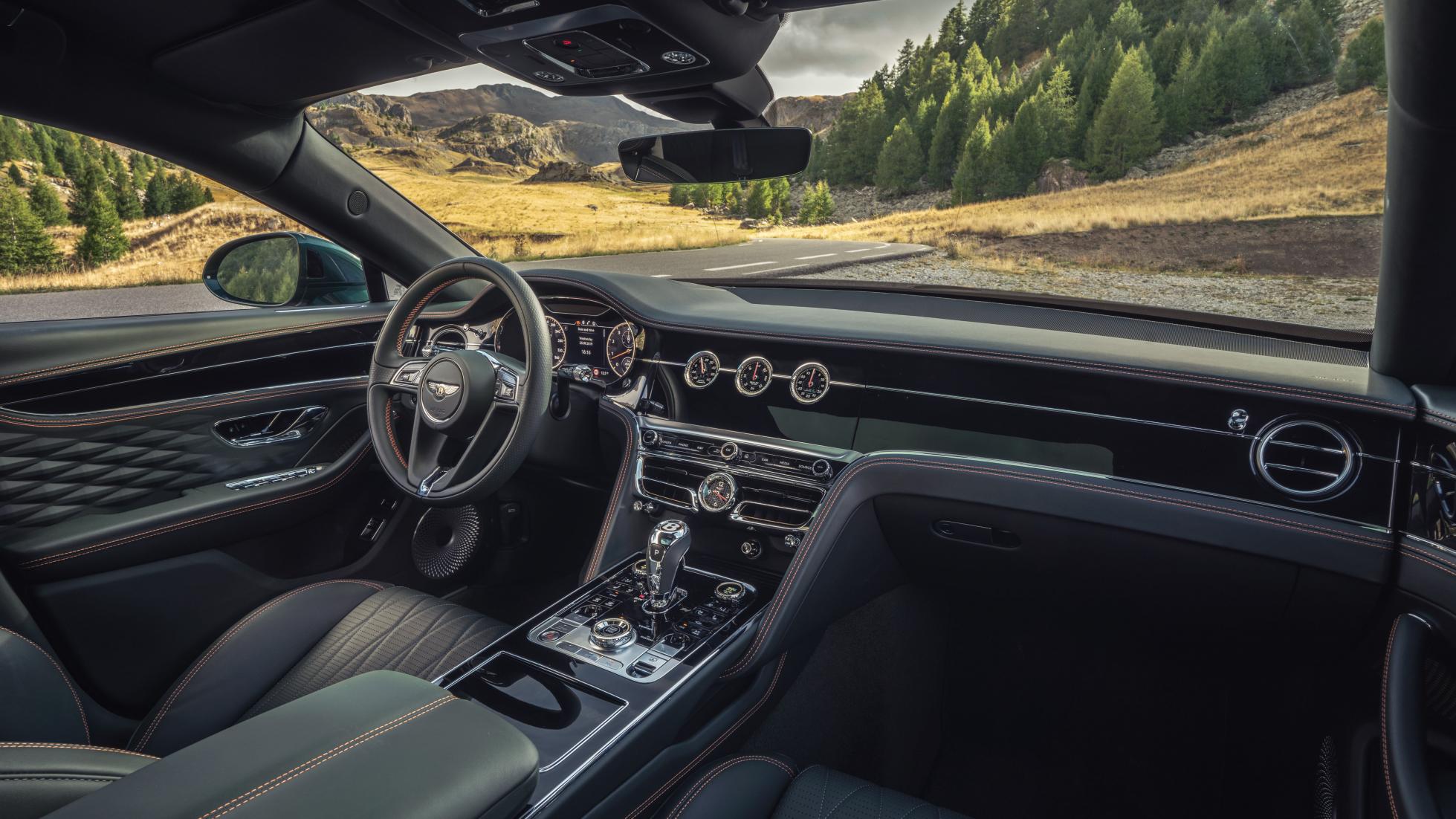
ON THE INSIDE - Layout, finish and space
Welcome to the rear seat. Lots of legroom, isn’t there? Quite a few toys to play with as well. Some of them (mood lighting, fridge, rear seat entertainment, massive B&O or Naim stereos) are optional, others (14-way electric, heated and cooled, massage chairs all round, detachable touchscreen remote control) are standard. Depends how much access to media and tech you want. Make it a business environment, or an escape from all that.
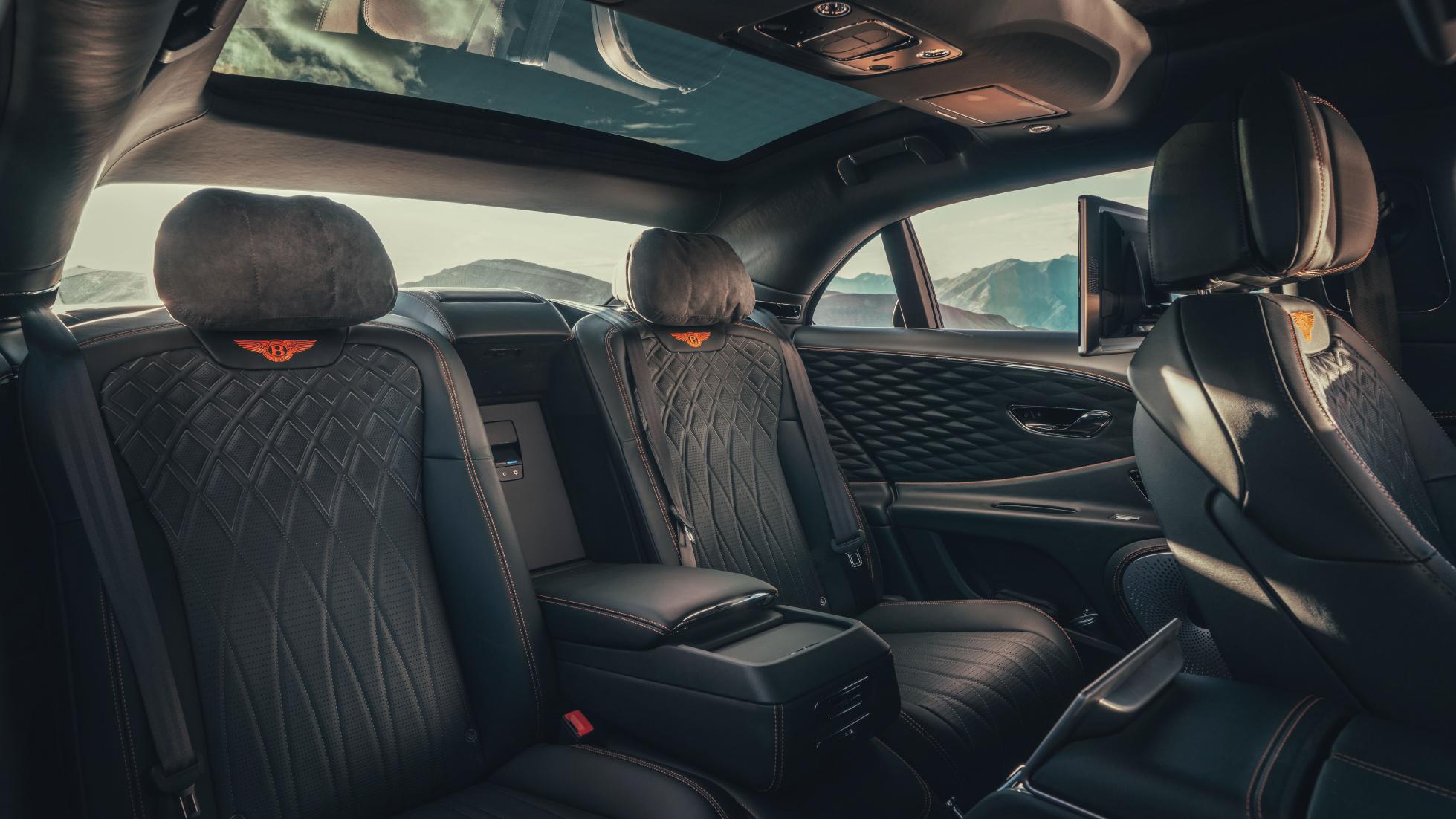
The detachable remote is good though. Allows those in the back to have as much input into and influence over the in-car entertainment and navigation as those up front. Putting your kids in the back? Maybe that’s not such a great thing. Confiscate it before you get going.
The view out the side windows is slim but pleasing, the atmosphere, especially with the new 3D quilting (a world first) on the doors, is luxurious, but on the whole pretty contemporary, too. Much of that depends on the speccing though. By all means have it olde-worlde gentleman’s club if you must.
As we said earlier, the driving environment has a lot in common with the Conti GT, although the two bulls-eye vents on the centre console have been replaced with more modern vent design. That’s the best way to distinguish the two. There’s a lot of switchgear to manage, mostly it’s self-explanatory and doesn’t require too much eyes-off-road time. Nothing looks like it’s come from the VW parts bin, even though it has. That’s not only because Bentley has applied its own decoration, but because the wood and leather is so distracting. As ever, it’s absolutely beautifully done, a tribute to Crewe’s craftsmanship.
This is a cabin you sit in and admire. The tech is no more advanced or comprehensive than you’ll find in a BMW or Merc costing tens of thousands less, but that’s not what sets the Flying Spur apart. It’s the ambience that does that.
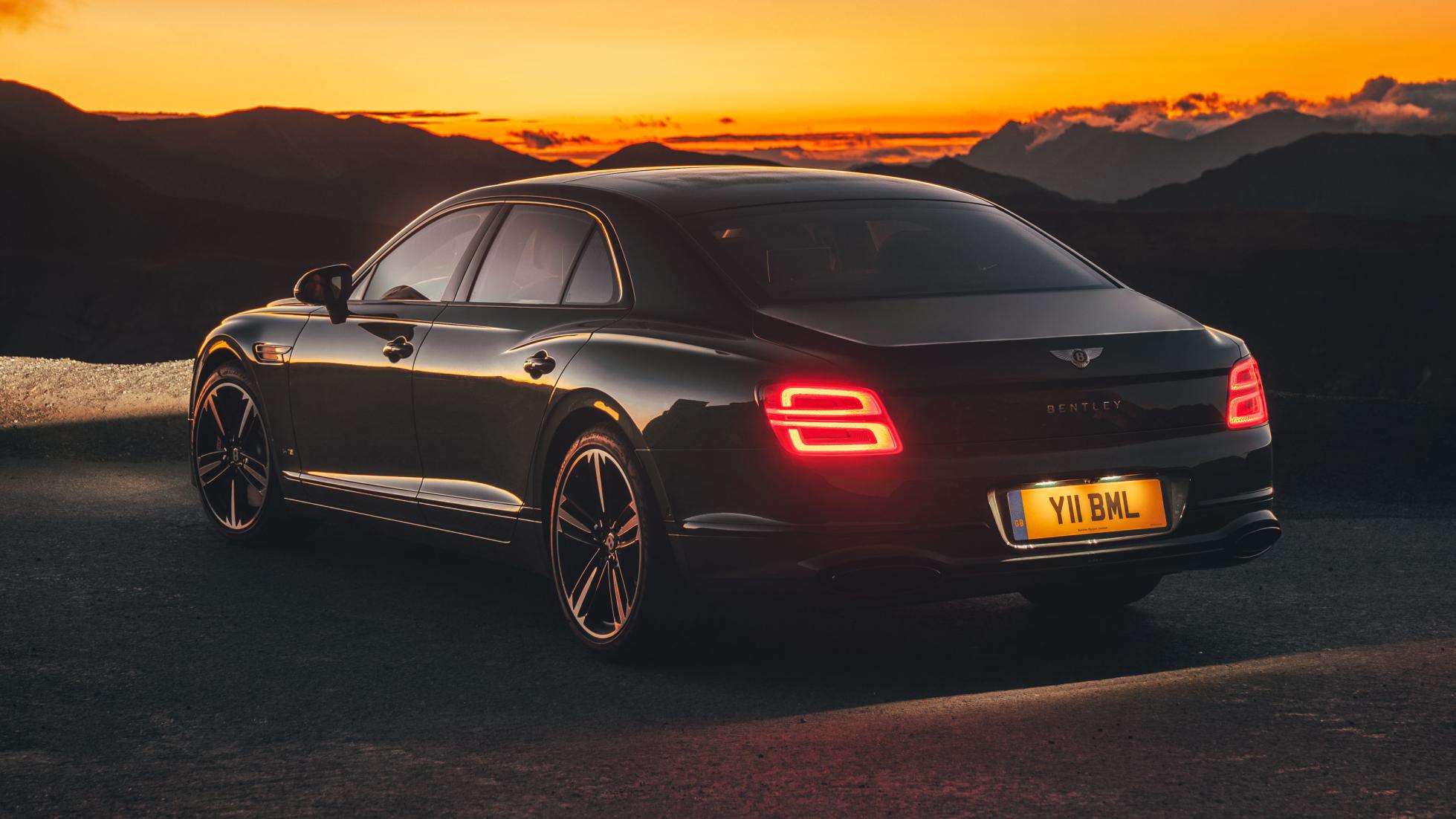
OWNING - Running costs and reliability
Have you looked at the price of used Flying Spurs? Ten year old cars can be picked up for an absolute song. Sub-20k for a beautifully made, exhaustively developed, 322kph luxury saloon. Would you want one, though? They weren’t the most elegant machines around.
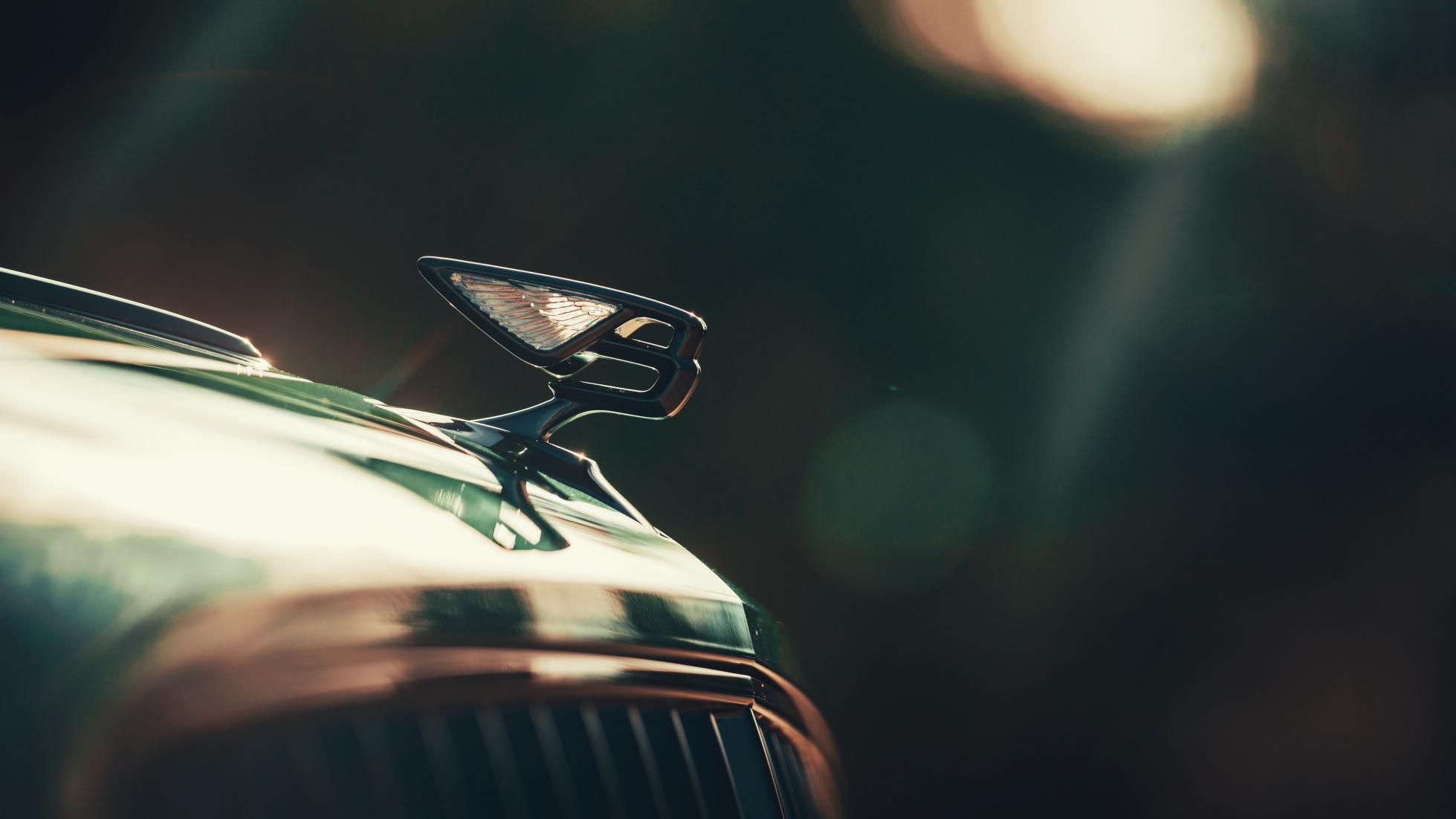
Will this one stoop to sub-Focus prices? Depends partly on production volumes, but beyond that we reckon it’ll hold its head higher above the choppy waters of the used car seas. It’s better looking, better driving, way more desirable than the previous Flying Spur.
Still, it’s going to cost a lot to buy and run. Expect the £168,300 list price to swell by £30,000 by the time you’ve attached all the features you want. This despite the fact it’s fitted with plenty of desirable stuff as standard: matrix LED lights, night vision and so on.
Even then, a 12 cylinder internal combustion engine is a hard sell in the new electric age. Doubtless this will be the heaviest consumer in the Flying Spur range. A V8 will follow shortly, and beyond that a hybrid is bound to put in an appearance now that the Bentayga has been electrified. Just hope it’s a better system than the V6 and modest battery/range/efficiency of Bentley’s first offering.
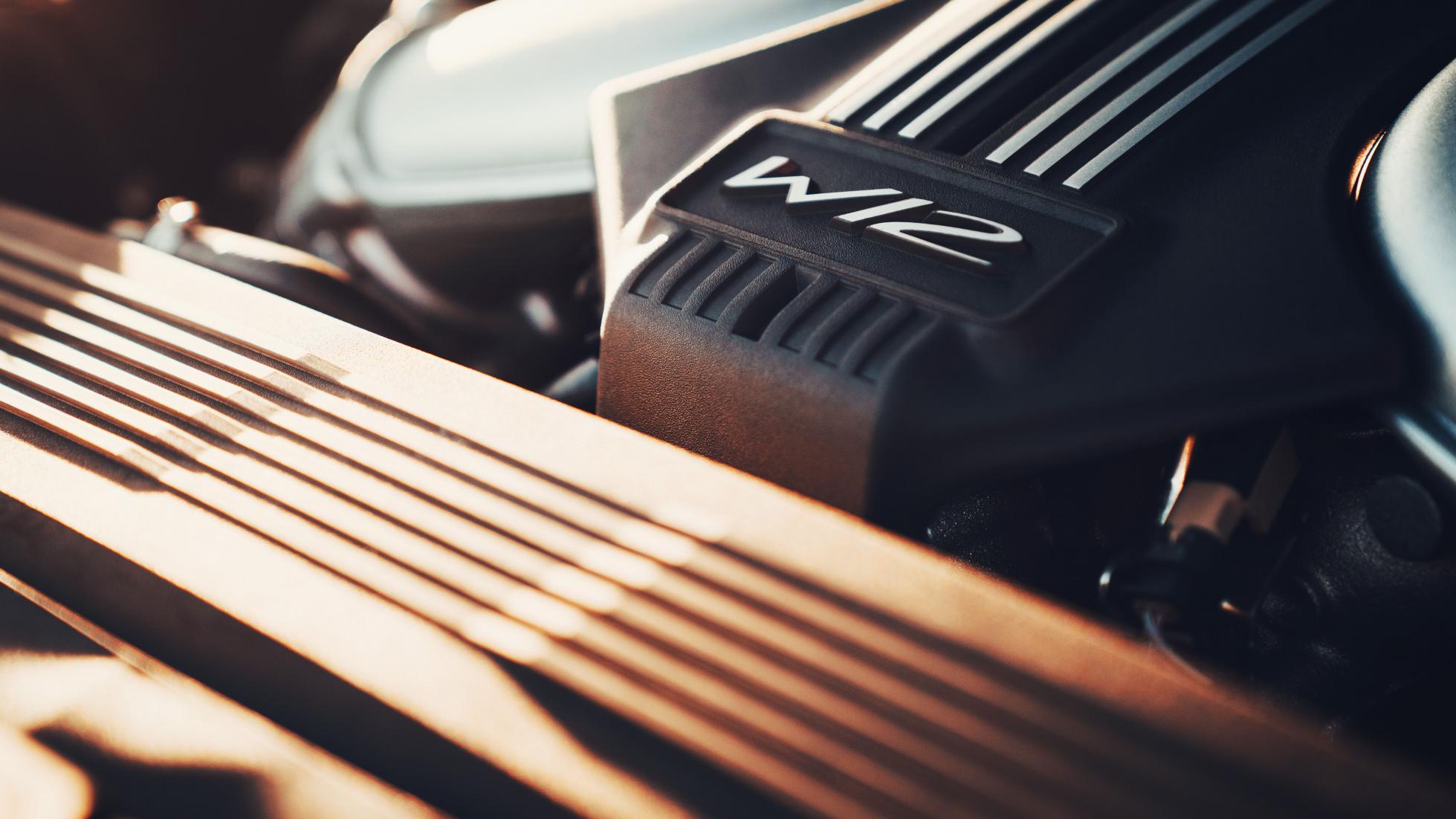
VERDICT - Final thoughts
It’s a deeply clever car this, bridging the gap between the driver and the driven more comprehensively than any other luxury saloon. The German brands may be more affordable, but they’re also more generic, hard to distinguish from each other, shorn of presence. Cars for the destination, not the journey.
Enjoy driving? This is perhaps the most compelling four door Bentley’s built since the anachronistic Arnage. It uses technology very effectively, but doesn’t allow it to dominate. There are a couple of small improvements that ought to be made (throttle response and gearbox algorithms), but otherwise this is a swift, sure-footed and genuinely enjoyable luxury saloon, faster than anything this side of a Panamera Turbo S and way more cossetting. And for the driven the spaciousness, design and tactility of the cabin lifts it well clear of anything a mass-market brand has to offer.
The Flying Spur is a very, very convincing car, handsome and stately enough to usurp the Mulsanne, more bespoke and special than a Bentayga, arguably an even bigger step forward than the Conti GT. The best advert for the return of the four-door saloon we’ve driven in years.
Perhaps the most compelling four door Bentley’s built since the Arnage.
| FOR | AGAINST |
| Handsome and well proportioned, dynamic breadth, interior design | Throttle calibration could be better. Little else |
| SCORE | 9/10 |
